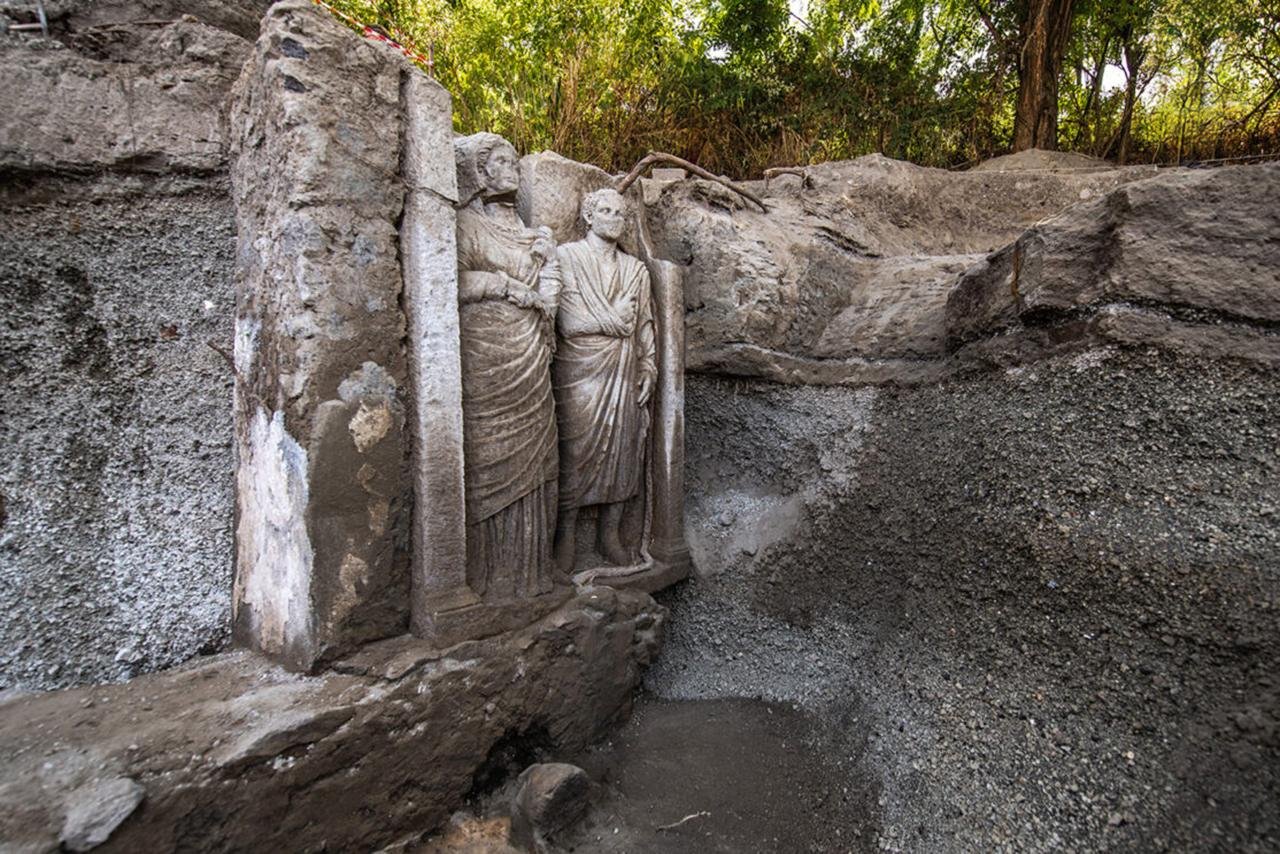Archaeologists in Pompeii have uncovered two near-life-size statues in a necropolis near Porta Sarno, one of the main gates of the ancient city. The statues, a carved relief depicting a man and woman, are dated to the Late Republican period of Rome (2nd–1st century BCE) and may depict an elite couple or a priestess and a male relative.
 The figures adorn the wall of a tomb found in Pompeii. Courtesy of the Archaeological Park of Pompeii
The figures adorn the wall of a tomb found in Pompeii. Courtesy of the Archaeological Park of Pompeii
The researchers were carrying out the “Investigating the Archaeology of Death in Pompeii” research project on behalf of the Archaeological Park of Pompeii and the University of Valencia under the scientific direction of Professor Llorenç Alapont. According to Gabriel Zuchtriegel, director of the archaeological park, the statues were carved out of a monumental tomb wall that also featured multiple niches for cremation urns. Such high-relief funerary sculptures are rare in southern Italy.
The female figure is adorned with amphora-shaped earrings, a wedding ring, bracelets, and a lunula pendant necklace—a crescent moon-shaped amulet that Roman girls wore before marriage to ward off evil. She is dressed in a large cloak over a tunic and holds laurel leaves in one hand, a symbol used in purification rituals, and a cylindrical container in the other hand, possibly a scroll. Based on these features, experts hypothesize that she could have been a priestess of Ceres, the Roman goddess of motherhood, fertility, and agriculture.
In Roman society, where women were confined to domestic roles, being a priestess was among the highest statuses for a woman. Priestesses were very influential, overseeing religious rites and participating in sacred processions. Sophie Hay, a British archaeologist working at Pompeii, explained to The Telegraph that Ceres was widely revered because she was believed to be connected with agriculture and fertility. This discovery provides fresh evidence that a dedicated priestess of Ceres held a specific role in the official religious life of Pompeii.
 Such high-relief funerary sculptures are rare in southern Italy. Courtesy of the Archaeological Park of Pompeii
Such high-relief funerary sculptures are rare in southern Italy. Courtesy of the Archaeological Park of Pompeii
The man in the relief wears a simple toga across his left shoulder, but experts are not certain whether he is connected to the female figure. “Sometimes you get two men, or sometimes they come in threes,” Zuchtriegel said. “This could be her husband, but it could also be her son. There is no inscription, so we don’t know.”
Excavations at the Porta Sarno necropolis date back to the 1990s when the construction of the Circumvesuviana railway line resulted in the discovery of over 50 cremation burials. Partly mummified remains of a previously enslaved person who had risen socially were discovered in 2021. The ongoing study continues to reveal new details about the burial customs of Pompeii and its societal hierarchy.
 The female figure holds laurel leaves, which is a symbol used in purification rituals. Courtesy of the Archaeological Park of Pompeii
The female figure holds laurel leaves, which is a symbol used in purification rituals. Courtesy of the Archaeological Park of Pompeii
In addition to the statues, archaeologists uncovered fragments of ceramic vessels, a broken bronze mirror, and ointment jars once filled with perfumed oils—essential elements of Roman funeral rituals. After cremation, the ashes of the ᴅᴇᴀᴅ were often anointed with scented oils before being placed in urns with symbolic objects such as coins.
The newly discovered sculptures have been transported to the Palestra Grande within the Pompeii excavation site, where they will undergo careful restoration. They will be the centerpiece of the upcoming exhibition “Being a Woman in Ancient Pompeii,” opening on April 16, 2025.
More information: Archaeological Park of Pompeii





